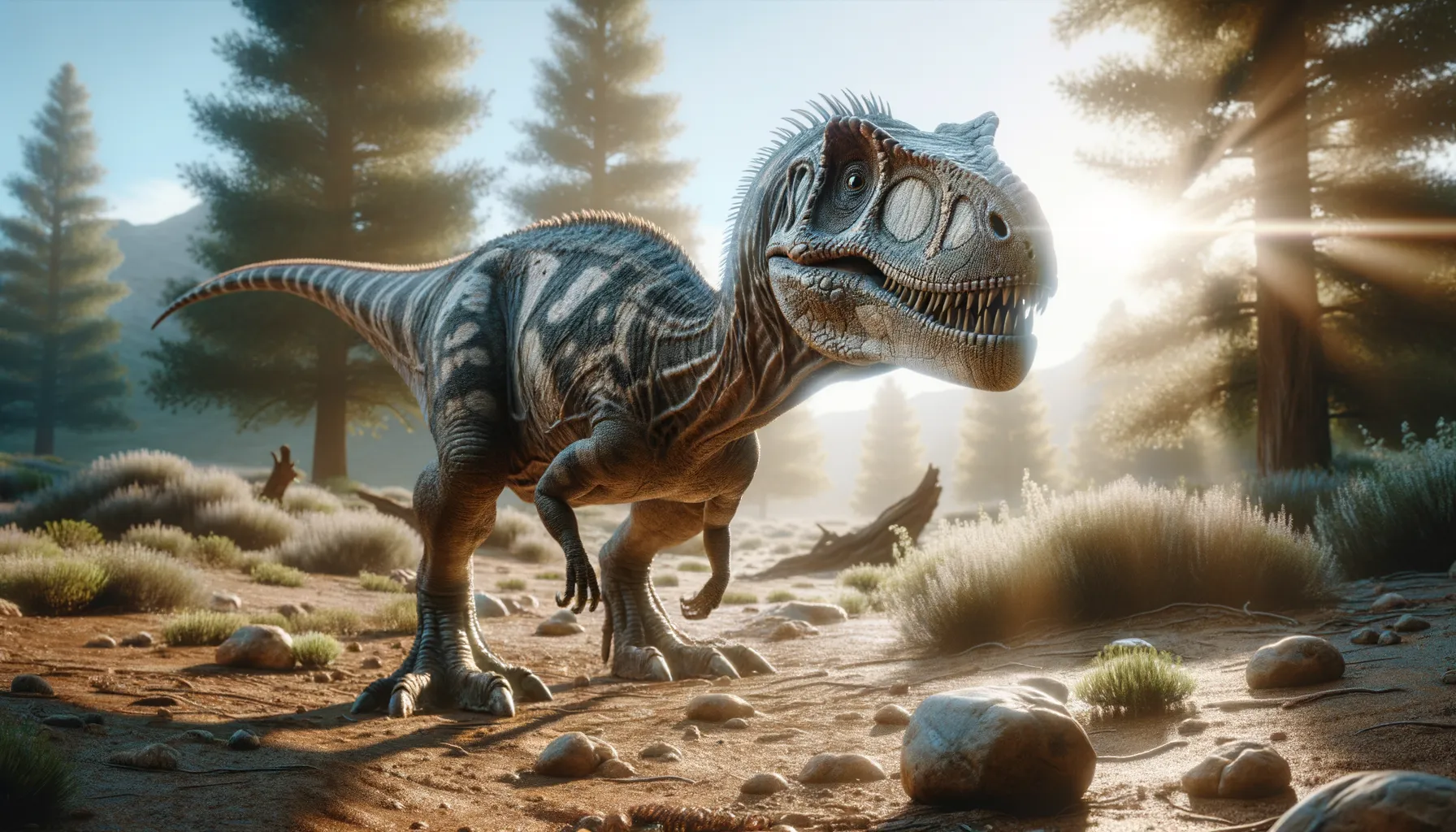
Daemonosaurus
A glimpse into early dinosaur evolution.
Period
Triassic
Length
Measured about 1.5 meters in length.
Height
Stood around 60 centimeters tall.
Weight
Weighed approximately 15 kilograms.
Daemonosaurus was a small, bipedal dinosaur from the Late Triassic period. Found in what is now New Mexico, this dinosaur filled a unique ecological niche as a predator of small to medium-sized animals. Its discovery provided crucial insights into the early evolution of theropods. With a distinctive skull and a combination of primitive and advanced features, Daemonosaurus helps connect the evolutionary dots between older and more derived dinosaurs.
Diet
Daemonosaurus was carnivorous, likely preying on small vertebrates and insects. Its teeth and jaw structure suggest it was well-adapted for a diet requiring quick strikes and some ability to grasp prey.
Hunting
As a hunter, Daemonosaurus probably relied on its speed and agility. It might have used ambush tactics to surprise prey and perhaps hunted in sparse groups or as individuals.
Environmental challenges
Daemonosaurus lived during a period of dynamic environmental change. The Triassic period saw fluctuating climates, presenting challenges such as limited resources. The shifting environment required adaptability in both its hunting strategies and habitat preferences to survive.
Speed
Likely agile, suitable for dashing.
Lifespan
Estimated to be several years to a decade.
First discovery
Unearthed in Ghost Ranch, New Mexico in 2004.
Fun Facts
- Daemonosaurus was a small dinosaur that lived during the late Triassic period, around 205 million years ago.
- Its name translates to 'demon lizard,' which comes from its unique skull features that were unlike other dinosaurs from its time.
- Daemonosaurus was discovered in New Mexico, USA, at a site known for its rich fossil beds.
- Despite its fierce name, Daemonosaurus was actually quite small, estimated to be only about 5 feet long.
- This dinosaur is particularly interesting because it bridges a gap between the older, more primitive dinosaurs and the more advanced ones that came later.
- Daemonosaurus had a short, blunt skull with large eye sockets, giving it a rather distinctive appearance.
- The discovery of Daemonosaurus has helped scientists better understand the early evolution of dinosaurs, especially their head and neck structures.
Growth and Development
Daemonosaurus likely grew rapidly during its juvenile stage to defend against larger predators. As it matured, new metabolic and hormonal changes helped it transition to an adult form, ready to take on larger environmental and social roles.
Habitat
This dinosaur lived in a semi-arid environment with seasonal rains. Its landscape was likely dominated by ferns and few types of coniferous plants. Such environments would have provided cover and hunting grounds among sparse vegetation and scattered water sources.
Interaction with other species
Daemonosaurus likely competed with other small- to medium-sized predators for food. It may have occasionally fallen prey to larger carnivores, while potentially sharing its environment with herbivorous dinosaurs, whose remains hint at a complex ecological network.
Natural lifespan
Its natural lifespan might have been influenced by predation and environmental conditions.
Reproduction
Daemonosaurus is thought to have laid eggs, with nesting behavior that ensured the survival of its offspring in a dynamic environment. It possibly employed strategies to safeguard its young from predators until they were capable of independent survival.
Social behaviour
While primarily solitary, it may have formed temporary groups during breeding seasons for mating. Any group interactions would have been primarily pragmatic, aimed at mating or collective hunting when advantageous.
Fossil locations
The primary fossil location for Daemonosaurus is Ghost Ranch, New Mexico. Discoveries in this area have provided important paleontological insights. These fossil finds highlight the diverse array of species that once inhabited the region during the Late Triassic.
